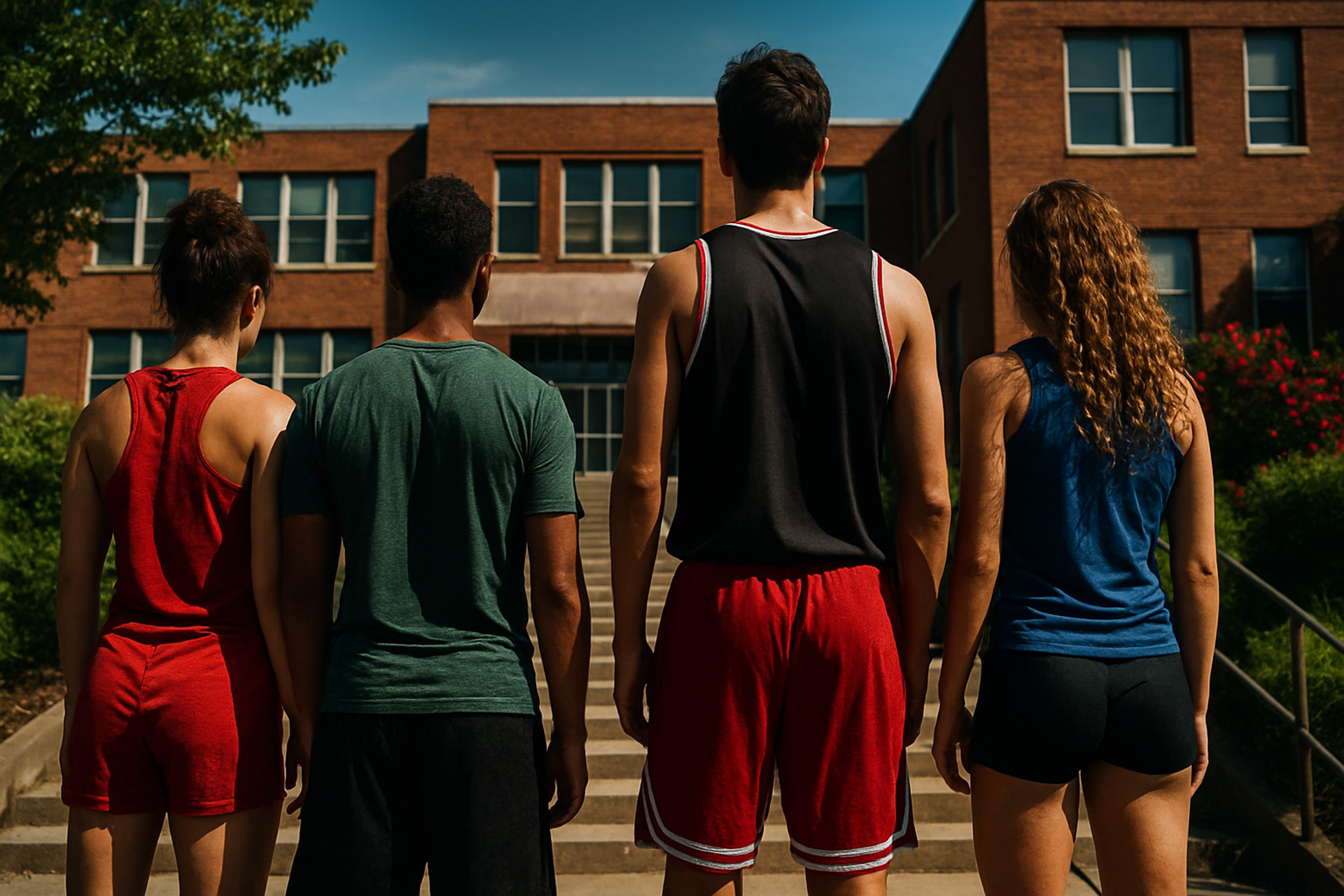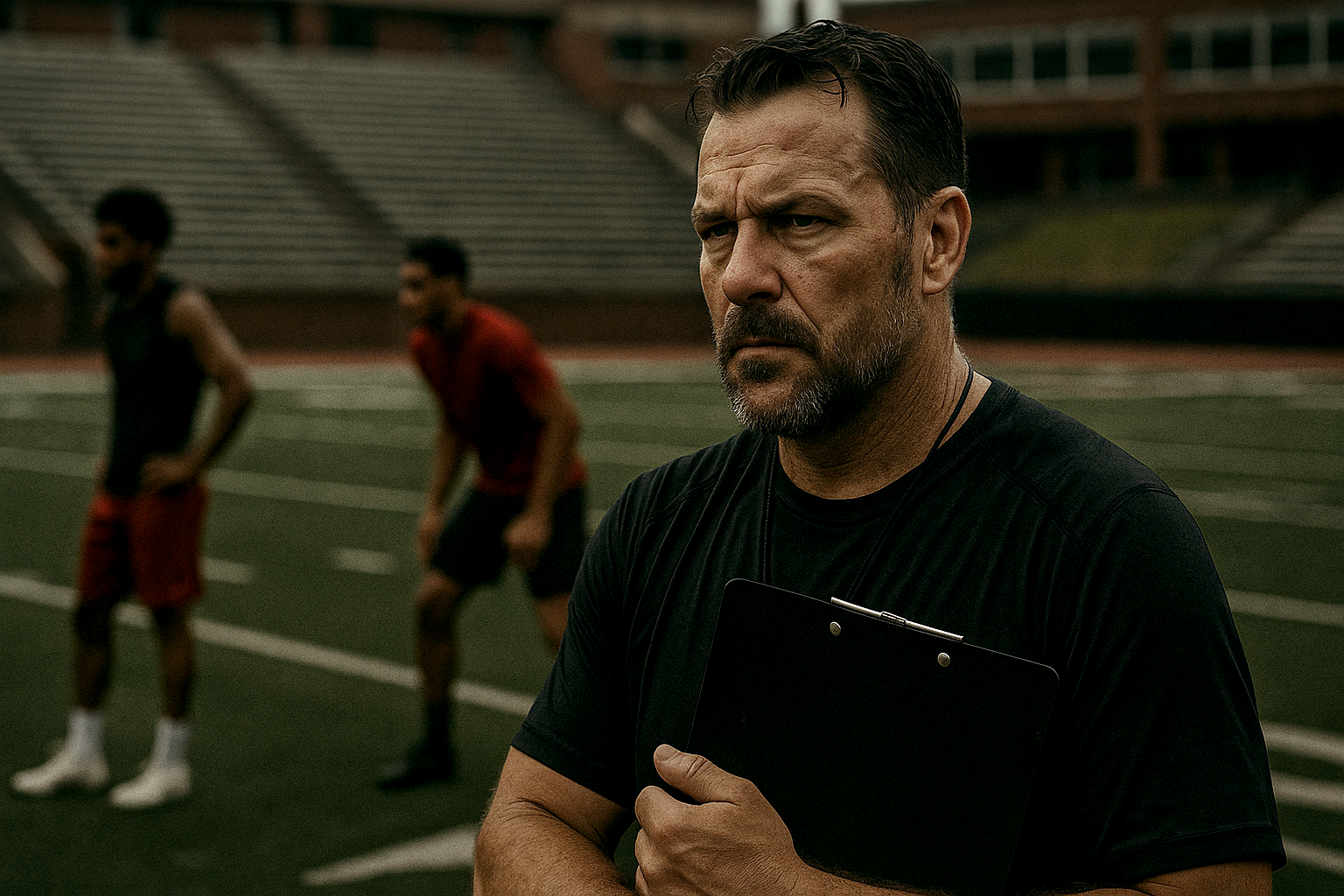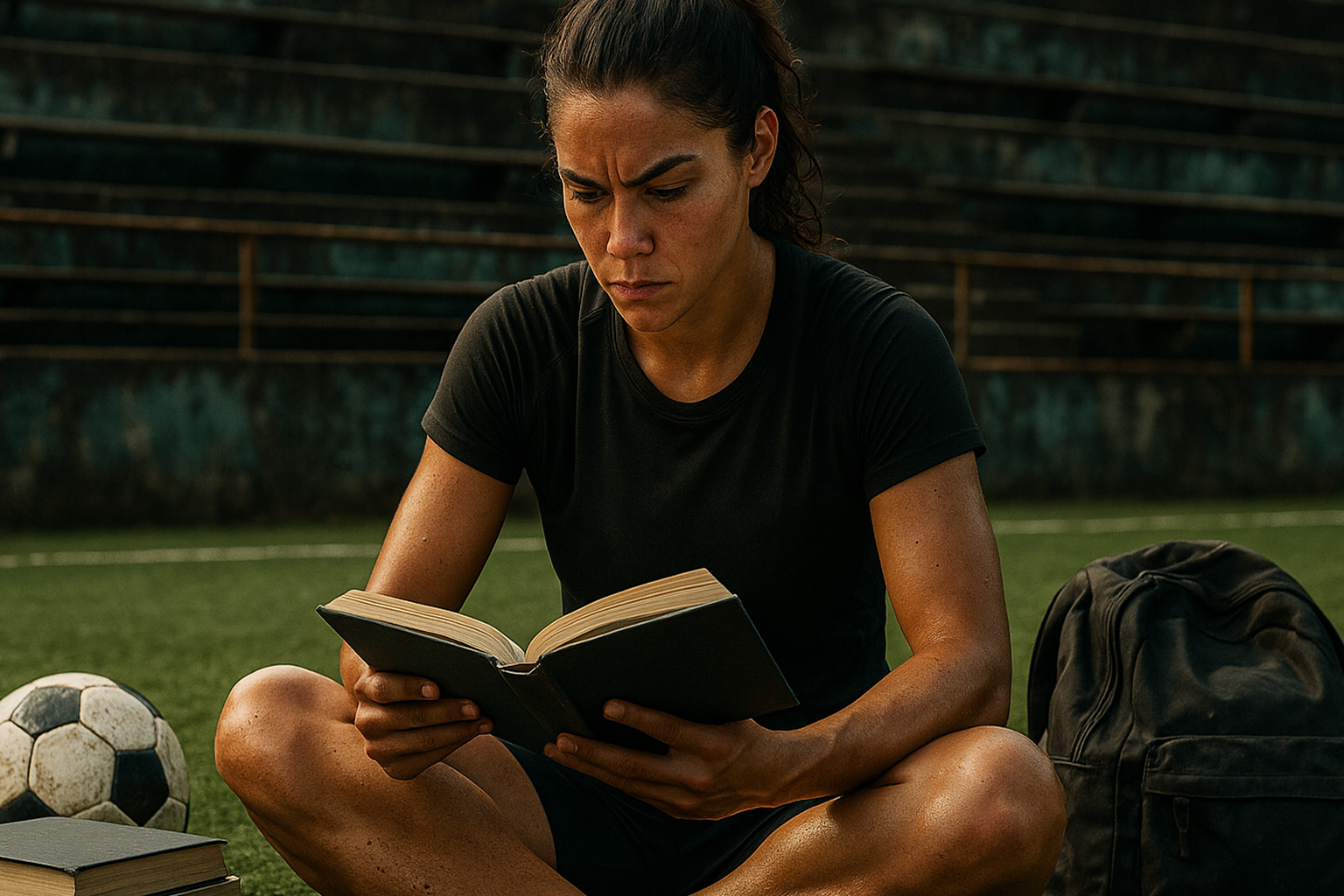College recruitment isn’t a moment – it’s a process.
It starts early and builds year by year through high school. Every piece matters: your grades, your game, and how you connect with coaches. Athletic organizations often sets strict timelines for when coaches can reach out, when visits happen, and when offers drop. It’s different by sport and division – and knowing the rules gives you an edge.
This article breaks the process down, freshman through senior year – with a focus on the NCAA because it’s the most rigid. However, the principles apply across the board. For deeper info, hit our full athletic recruitment guide.
TLDR – HOW STUDENT ATHLETES SHOULD APPROACH HIGH SCHOOL FOR COLLEGE RECRUITMENT
FRESHMAN YEAR: LAY THE FOUNDATION
- Academics: Start strong. Align courses with NCAA core requirements. Build good study habits.
- Athletics: Join school and club teams, track your stats, and start filming games.
- Recruitment prep: Learn NCAA rules and divisions. Watch college games. No need to rush – just build awareness.
Reminder: You can’t play in college without academic eligibility. Don’t wait until junior year to fix a low GPA.
SOPHOMORE YEAR: BUILD YOUR PROFILE
- Recruiting materials: Update highlight video and track key stats. Document academic and extracurricular wins.
- Get seen: Go to camps, join competitive clubs, and play in tournaments.
- Outreach: Start emailing coaches, fill out recruiting questionnaires, and follow programs on social media.
Key date: June 15 – D1 coaches can start contacting you in many sports. Be ready.
JUNIOR YEAR: RECRUITING GETS REAL
- Coach communication: Reply fast. Schedule calls and meetings. Keep it professional.
- Campus visits: Take unofficial visits. Ask smart questions. Compare program culture and academics.
- Shortlist schools: Sort into reach, target, safety. Focus on fit beyond athletics.
Key date: August 1 – Official visits begin for many sports.
SENIOR YEAR: CLOSE THE DEAL
- Admin tasks: Submit applications, test scores, and transcripts. Check NCAA eligibility boxes.
- Evaluate offers: Compare scholarships, academics, and fit. Think long-term, not just the next season.
- Commit: Sign NLI if applicable. Tell other coaches. Start preparing for college transition.
Heads-up: Scholarship offers can be pulled if your grades drop. Stay focused until graduation.
WHY EARLY PREPARATION MATTERS
Early preparation improves outcomes in the recruitment process. The NCAA reports that fewer than 7% of high school athletes go on to compete at the collegiate level across all divisions. Of those, only about 2% receive athletic scholarships.
Starting early increases the likelihood of being seen by coaches and evaluated during limited recruiting periods. Athletes who begin building their academic and athletic profiles in 9th or 10th grade are more likely to have scholarship conversations by junior or senior year.
Recruitment timelines vary by sport, but many Division I and II programs begin identifying talent as early as sophomore year. Some sports, such as women's soccer and gymnastics, often see verbal commitments before junior year.
Think of recruitment like training for a championship season. A successful outcome depends on consistent planning, not last-minute effort. Just as athletes train for months before playoffs, recruitment follows a long-term process with specific benchmarks.
KEEPING ACADEMICS ON TRACK FOR NCAA ELIGIBILITY
Academic eligibility is required for participation at NCAA Division I and II schools. The NCAA uses a set of academic standards to determine whether a student-athlete may compete, practice, and receive a scholarship during their first year of college.
NCAA academic eligibility requirements:
- Core course requirements: The NCAA has specific course requirements in subjects like English, math, science, and social studies. Division I requires 16 core courses while Division II requires 16 core courses with slightly different distribution requirements.
- GPA benchmarks: Division I requires a minimum 2.3 GPA in core courses. Division II requires a 2.2 GPA.
- Registration timeline: Athletes should register with the NCAA Eligibility Center by sophomore or junior year. This process includes submitting transcripts, test scores, and an amateurism certification.
Meeting with your high school guidance counselor early in freshman year helps ensure you're taking the right classes from the start. Many students lose eligibility because they didn't take enough approved core courses or didn't maintain the required GPA.
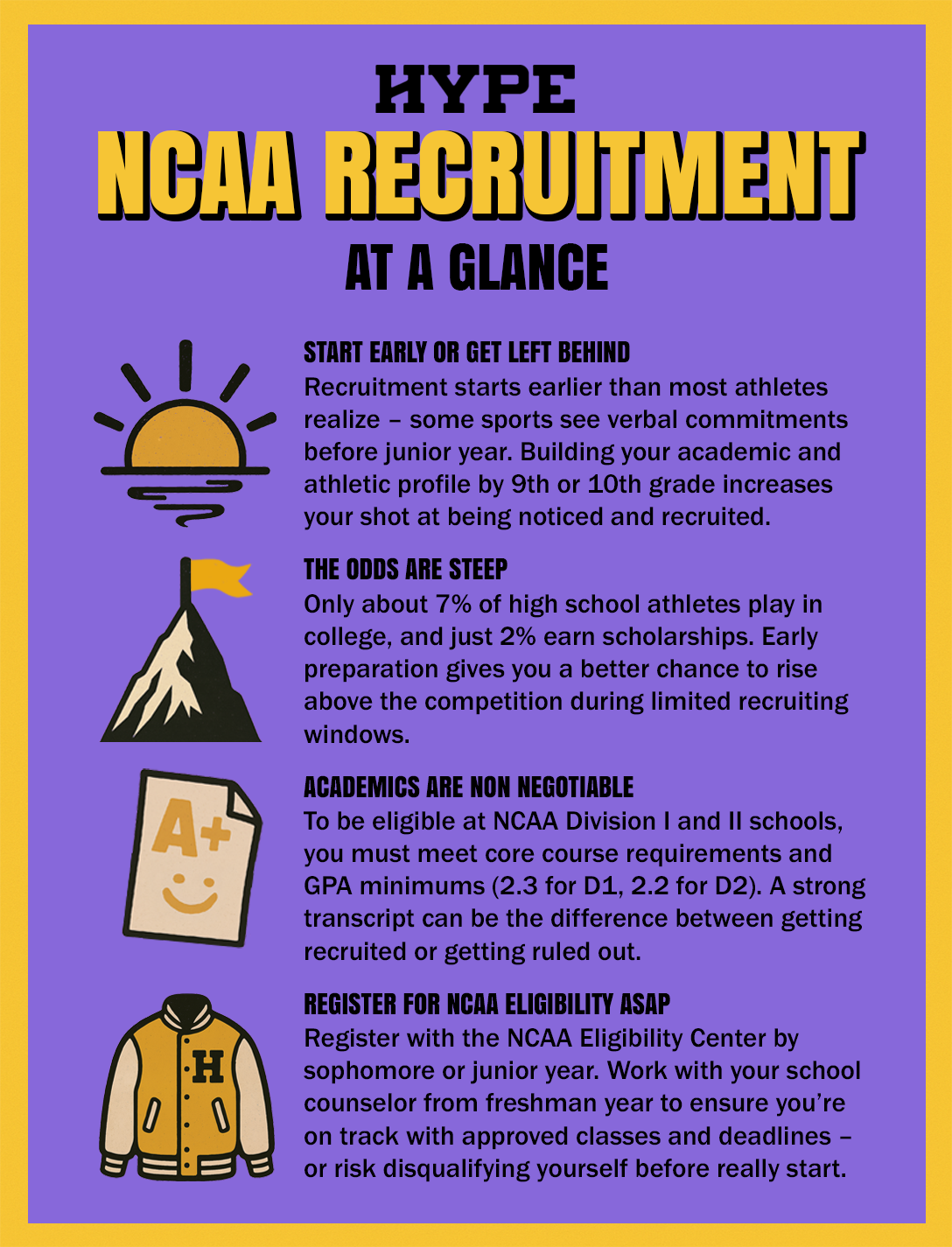
WHAT SHOULD STUDENT ATHLETES DO THEIR FRESHMAN YEAR OF HIGH SCHOOL?
Freshman year is the foundation for academic eligibility and athletic development. While Division I and II college coaches can't contact freshmen directly, athletes can begin preparing by organizing information, building relationships with school staff, and tracking performance.
Build your academic plan:
- Make sure your courses align with NCAA core requirements
- Establish good study habits from day one
- Meet with your guidance counselor to map out a four-year plan
Focus on athletic development:
- Join both school and club teams when possible
- Record baseline performance metrics (times, stats, etc.)
- Begin collecting video footage of games and competitions
Start the research process:
- Learn about different college divisions (D1, D2, D3, NAIA, JUCO)
- Understand the NCAA recruiting rules and calendar
- Watch college games in your sport
The goal during freshman year isn't to get recruited – it's to build the foundation that makes recruitment possible later. This means focusing on grades, skill development, and learning how the process works.
Many athletes make the mistake of ignoring academics early in high school, only to scramble junior year when they realize their GPA is too low for eligibility. Remember: no matter how talented you are athletically, you won't play in college if you don't qualify academically.
WHAT SHOULD STUDENT ATHLETES DO THEIR SOPHOMORE YEAR OF HIGH SCHOOL?
Sophomore year marks the point when many college programs begin identifying athletes for their future rosters. While direct communication from Division I and II coaches is still limited by NCAA rules, athletes can take steps to increase visibility.
Create your recruiting profile:
- Update your highlight video with recent footage
- Track key performance stats and metrics
- List academic achievements and extracurriculars
Expand your competition exposure:
- Attend camps and showcases where college coaches will be present
- Join competitive club teams that travel to tournaments
- Seek feedback from coaches about areas for improvement
Begin outreach efforts:
- Complete online questionnaires on college athletic websites
- Send introductory emails to programs that interest you
- Follow college programs on social media
June 15 after sophomore year is a key date for many sports – this is when Division I coaches can begin directly contacting athletes. Being prepared for this date with an updated profile, recent video, and clear communication plan gives you an advantage.
Remember that college coaches are evaluating more than just athletic ability. They're looking at grades, character, coachability, and potential for growth. Every interaction – whether through email, at a camp, or on social media – is part of their assessment.
WHAT SHOULD STUDENT ATHLETES DO THEIR JUNIOR YEAR OF HIGH SCHOOL?
Junior year is when most athletic recruiting activity takes place. This is the time when college coaches begin serious evaluations, send direct communications, and make scholarship offers for Division I and II programs.
Communication intensifies:
- Respond promptly to coach communications
- Schedule phone calls and video meetings
- Keep communications professional and athlete-driven
Campus visits begin:
- Plan unofficial visits to top-choice schools
- Prepare questions about academics, team culture, and training
- Compare facilities, campus environment, and coaching styles
Narrow your school list:
- Categorize schools: Reach (long-shot), target (realistic), safety (fallback)
- Consider factors beyond athletics (academics, location, size)
- Track which coaches show consistent interest
August 1 before junior year marks another important date – this is when official visits can begin for many sports. These visits, paid for by the college, provide a deeper look at the program and often include meetings with team members, academic advisors, and coaches.
The junior year recruitment process moves quickly. Having your highlight video updated, your academic information organized, and your questions prepared helps you make the most of opportunities when they arise.
WHAT SHOULD STUDENT ATHLETES DO THEIR SENIOR YEAR OF HIGH SCHOOL?
Senior year involves completing administrative tasks, reviewing offers, and making a final college decision. This phase includes finalizing applications, confirming eligibility, comparing financial aid packages, and signing a National Letter of Intent, if applicable.
Complete college application requirements:
- Submit college applications by early deadlines
- Send final transcripts to NCAA Eligibility Center
- Take or retake standardized tests if needed
Evaluate offers carefully:
- Compare athletic scholarships and financial aid packages
- Consider academic programs and graduation rates
- Assess potential playing time and development opportunities
Finalize your commitment:
- Sign National Letter of Intent during appropriate period
- Notify other coaches of your decision
- Begin preparation for college transition
The National Letter of Intent (NLI) signing periods vary by sport. For most sports, the early signing period begins in November, and the regular signing period extends from April through August. These dates are published annually by the NCAA.
Even after signing, maintaining academic performance remains critical. Colleges can withdraw scholarship offers if grades drop significantly or if an athlete fails to graduate or meet final eligibility requirements.
BALANCING MENTAL HEALTH THROUGHOUT THE ATHLETIC RECRUITMENT PROCESS
The recruitment process can be mentally and emotionally demanding. Athletes often feel pressure to perform, uncertainty about decisions, and stress about timelines and offers.
Recognize warning signs:
- Persistent fatigue or sleep disruption
- Loss of enjoyment in your sport
- Anxiety about performance or recruitment
Implement recovery strategies:
- Schedule regular breaks from training and recruitment activities
- Practice mindfulness or journaling to process emotions
- Maintain interests and friendships outside of sports
Build support systems:
- Connect with teammates going through similar experiences
- Work with coaches who understand the recruitment process
- Consider talking with a counselor or sports psychologist
Remember that recruitment is just one part of your athletic journey. Maintaining perspective, celebrating small victories, and focusing on personal growth helps keep the process in perspective.
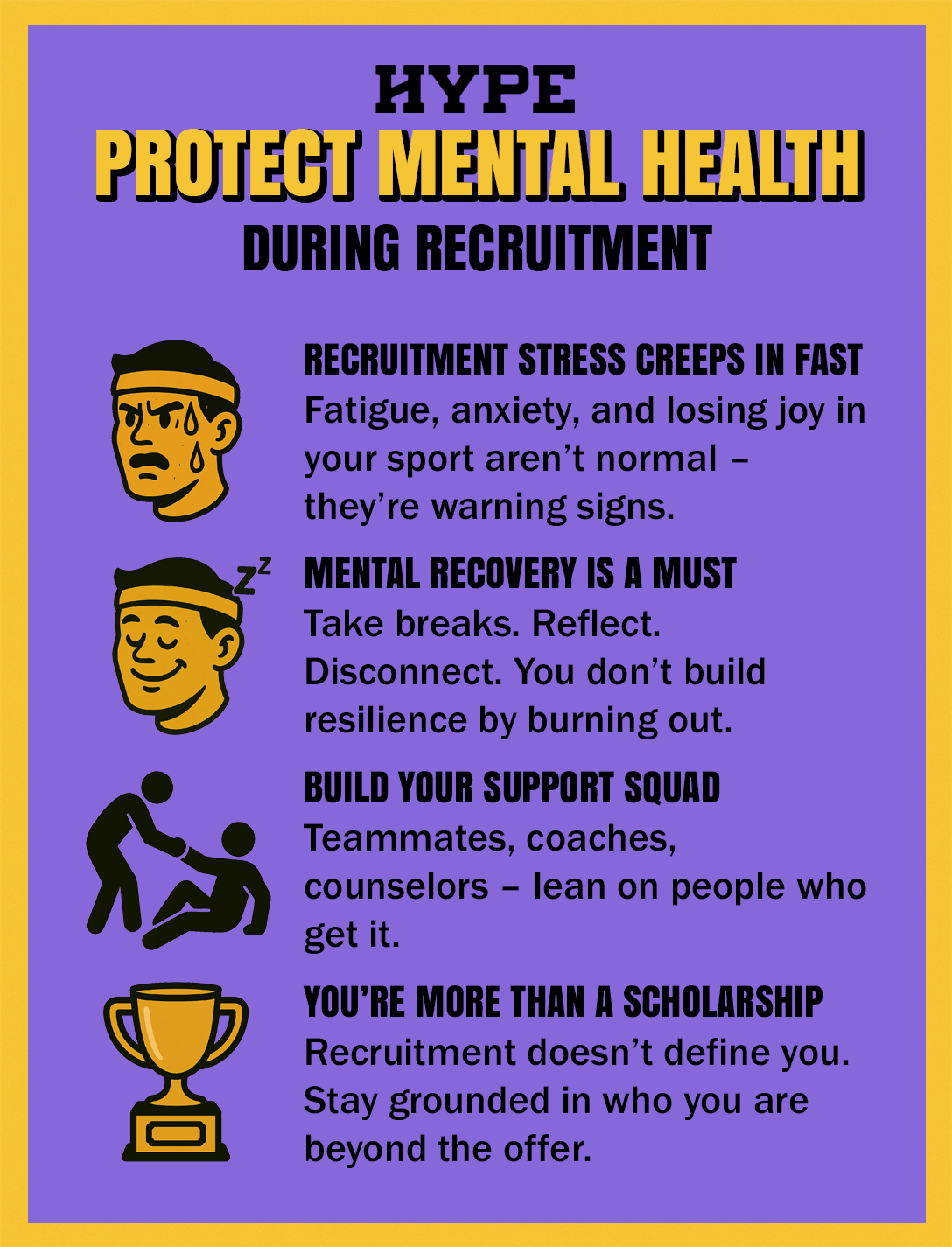
YOUR ROAD TO BECOMING A COLLEGE ATHLETE
Recruitment isn’t a moment – it’s a moving target.
It plays out over years, not days. Every season adds data: how you perform, how you grow, and how you align with a program’s needs.
Coaches aren’t just scouting talent – they’re looking at grades, character, and long-term potential. The right fit isn’t just about playing time. It’s about academic support, culture, and whether the school backs your full development.
Timelines vary. Some athletes commit early. Others decide late. Some bounce between levels before landing. Injuries, coaching changes, and personal shifts all play a role.
And the landscape keeps changing – from NIL and transfer rules to scholarship reshuffles. Athletes who stay aware and adaptable are the ones who make smart moves when it counts.
FREQUENTLY ASKED QUESTIONS (FAQ) ABOUT THE NCAA RECRUITMENT TIMELINE
WHAT IF I GET INJURED DURING A PIVOTAL RECRUITMENT SEASON?
Injuries during recruitment are common challenges that coaches understand. Continue the process by maintaining communication with coaches, sharing your diagnosis and recovery plan, and providing film from before your injury. Many coaches value seeing how athletes handle setbacks, as it demonstrates resilience and character – qualities they evaluate alongside athletic skill.
IS IT EVER TOO LATE TO START THE RECRUITMENT PROCESS?
While early preparation is beneficial, athletes can still find opportunities when starting later. Late starters should focus on creating a recruiting profile with academic records and highlight footage, targeting Division III, NAIA, and junior college programs that often recruit into senior year, and attending showcases for immediate evaluation. The timeline may be compressed, but opportunities remain available for determined athletes.
HOW SHOULD I HANDLE SOCIAL MEDIA AND NIL OPPORTUNITIES DURING HIGH SCHOOL?
Social media serves as a digital first impression for college coaches. Create a professional online presence by sharing performance highlights, training clips, and academic achievements while avoiding controversial content. High school NIL (Name, Image, Likeness) rules vary by state – check with your state athletic association for current regulations. College NIL opportunities begin after enrollment, so focus on building a positive digital presence that will appeal to both coaches and potential future sponsors.
HOW DO RECRUITMENT TIMELINES DIFFER BETWEEN MEN'S AND WOMEN'S SPORTS?
Women's sports, like soccer and gymnastics, often see earlier recruitment, with verbal commitments sometimes happening in sophomore year. Men's sports like football and basketball typically follow more structured timelines with national signing days. Scholarship distribution also varies – some women's sports offer more full scholarships per roster spot due to NCAA equity rules, while men's sports with large rosters often divide scholarships into partial offers. Understand the specific timeline for your sport and gender to align your efforts accordingly.
